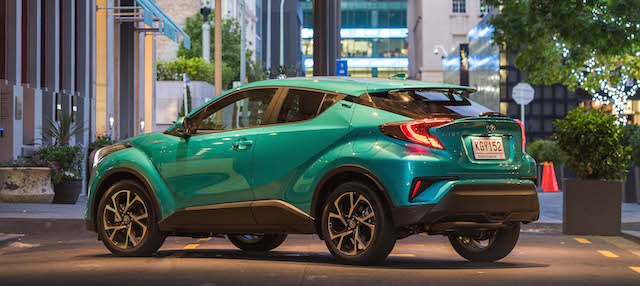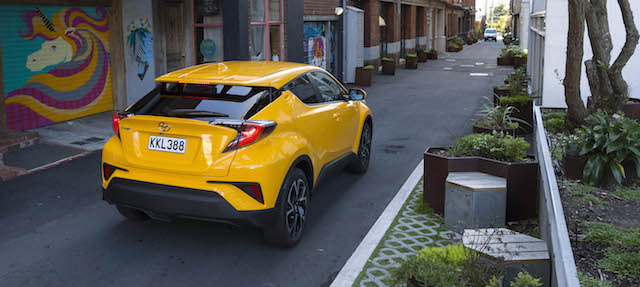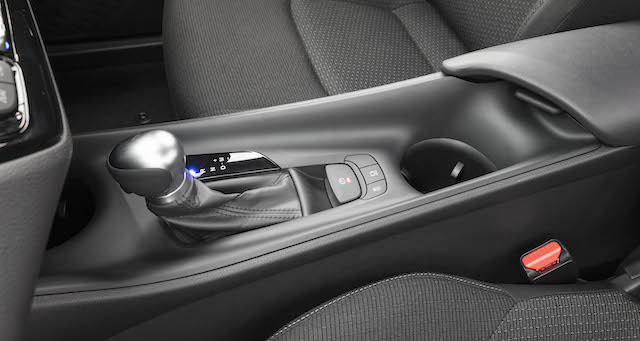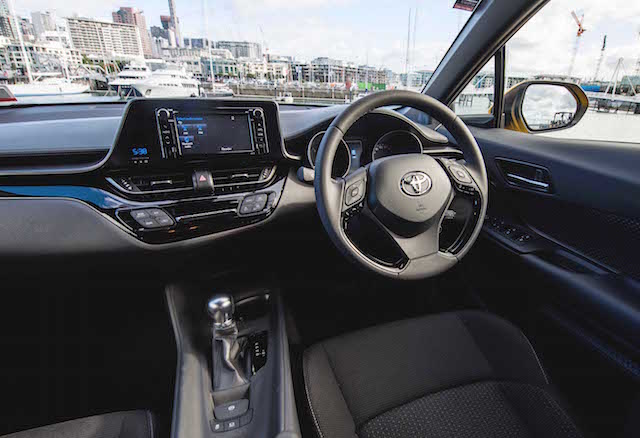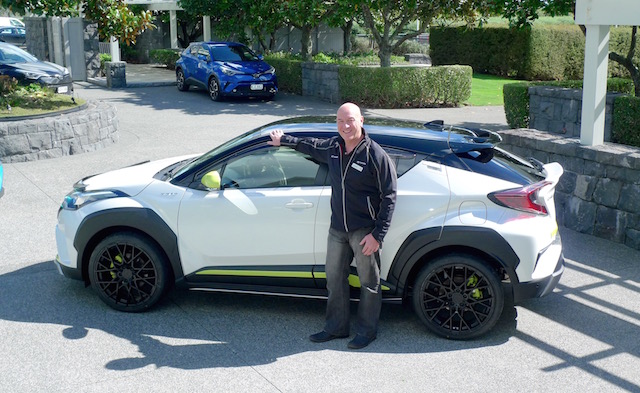
Toyota NZ sales manager Steve Prangnell (above) reckons SUVs in the compact segment are “drab looking compared to our car.”
He’s talking about Toyota’s new C-HR, a look-at-me five-door designed under instruction from the big boss in Japan, company president and CEO Akio Toyoda.
It’s what Toyoda wants from his styling studios. He said it himself: “Cars that people want to own at first glance and want to keep driving once they’re behind the wheel.”
The C-HR (Compact-High Rider) is a five-door unlike anything Toyota has done before. Penmen from Toyota’s luxury nameplate Lexus have clearly pulled the design strings.
The curves and angles on the outside of the C-HR carry through to the inside, especially the sweep of the dashboard. That’s Lexus-like.
The touchscreen, centre console, instrument designs, material patterns … all correspond in a muted way to the car’s exterior cues, or so-called ‘diamond architecture.’ That’s Lexus-like too.
The C-HR was initially aimed at the European market. Something about Euro appreciation for the cut and thrust of the design. Other markets protested.
Hey, what about us? said Toyota NZ. It was allocated 350 C-HR models at first. But, like Oliver Twist, it wanted more. “We made a lot of noise,” said Prangnell.
Now Prangnell and his sales team have 850 to sell in 2017 and 1000 or so in 2018. Over a bite to eat and a beer they might admit that the stumbling block could be the car’s 1.2-litre engine, or rather convincing potential buyers that its 85kW/185Nm output on 95-octane petrol is enough oomph. More on that down the page.
What they won’t need to smooth-talk is the chassis and its allied dynamics. More on that down the page too. There are two C-HR variants, the front-wheel-drive at $37,990 and the slightly heavier four-wheel-drive at $39,990. The four-paw can send 50 per cent of drive to the rear wheels when needed.
Both vehicles get the same level of equipment, including Safety Sense, Toyota’s class-leading suite of electronic armour. It includes radar cruise control, a pre-crash safety system with autonomous emergency braking.
The C-HR Prangnell is pictured with above is a dressed-up example. There are 55 bits and pieces in a palette of colours on the list of accessories, ranging from mix-and-match body kits to the practical roof rack and tow bar.
Underpinning the C-HR is the ‘C’ version of Toyota’s new global platform architecture (TNGA). The latest Prius uses a similar base; so will the new Corolla, due in 2018.
Suspension is by MacPherson struts up front and a wishbone set-up with trailing arms at the rear. MacPherson strut is one of the simplest, and cheapest, ways to keep the front end under control. A wishbone assembly is more complex but aids handling and ride quality.
And that’s where the C-HR shines. Front-drive or four-paw, it’s surefooted and accurate, insulating occupants while dealing with all sorts of surfaces in an accomplished and refined way. Its dynamic reach might put it at the top of the compact SUV class.
As for the engine, it’s adequate but largely uninspiring. It’s not exactly let down by its maximum 85kW, but to make the most of the excellent chassis on a spirited drive, it’s more enjoyable to give the four-cylinder its head and push it along in manual mode, matching ratio and revs.
But throwing the C-HR about is the exception. Under normal driving, the seven-step continuously variable transmission (CVT) responds to throttle inputs without undue flaring and makes use of the 185Nm from 1500rpm. Claimed town-and-around fuel use is 8 litres/100km, or 150 grams of CO2 per kilometre.
Toyota makes much of accessories and kitting out the C-HR “to enhance the athletic contours of the vehicle”. But there’s one thing can’t be changed and that’s the rear door handles integrated high into the bodywork. They are 1.4 metres off the ground. They might fit with the design of the car, but are they family functional?


